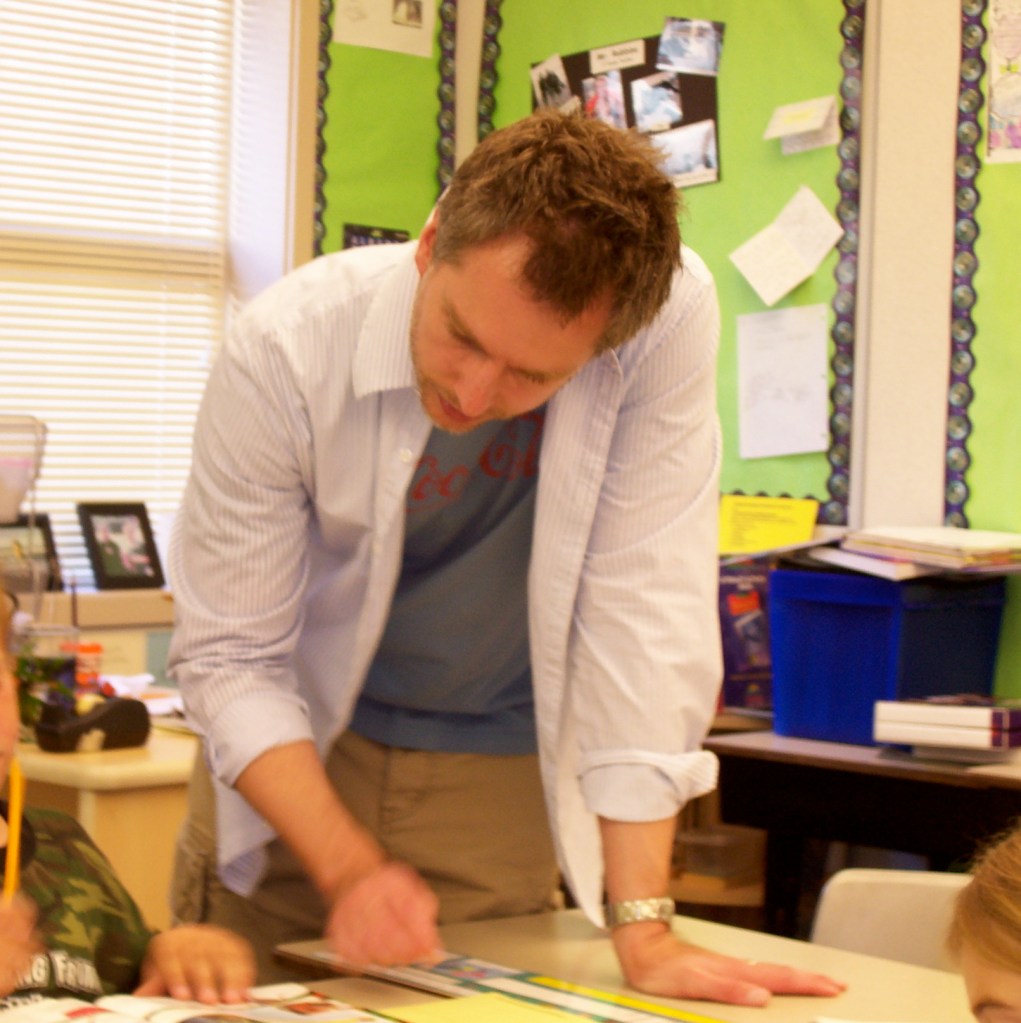When I decided to step away from my work as a STEM professional way back in the late 1990s and move into K-12 education- my personal goal was to make a positive impact on elementary science instruction. As a new elementary classroom teacher I hoped to get my students engaged and interested in science. I also wanted to model what effective elementary science instruction looks like and to generate interest for science in my building. Instead of putting arts and crafts on the wall outside my classroom door, I would put photos of my students doing science along with a title or a question. “Can you make the bulb light with one wire?” Things like that. I can remember other students walking by my room and saying, “When do we get to do that?” I hoped this would encourage other teachers to want to crack open their science kits and get kids doing science. Sometimes it worked…often it didn’t.
I worked on our state 5th grade science assessment committees on and off for almost two decades. I worked as an elementary science specialist. I started conducting elementary science professional development…my first foray into the work that I do now. I implemented science notebooks and conducted trainings on science materials. I worked with multiple sets of science standards. I tried to get teachers (and elementary admins) excited about elementary science. At some point I realized I needed to leave the classroom in order to have a larger reach.

I worked as a regional science coordinator and was co-director of a LASER Alliance. I supported district science leaders with their own professional development and tried to support their district efforts as best I could. I always tried to focus on K-5 science but there were often competing initiatives, or goals, or busy work that cut into what I really wanted to do. When I reflect back it is this time period where I really regret not being stronger, and more vocal, and using my position and resources to bring a regional focus to K-5 science.
Then I branched out on my own and started doing my own consulting work. I helped to roll out the Next Generation Science Standards in multiple location and grade bands. I had opportunities with K-5 teachers but they were often “one offs”…brief trainings with no follow-up or support with implementation.
I also started teaching K-8 science methods courses for a variety of colleges and universities. (I was going to try to count how many pre-service teachers I’ve worked with over the years but I don’t have great records of those early years. It is several hundred.) Most of my science methods students go on to become elementary teachers. I like to think that I’ve made some tangible impact by getting my students (future teachers) excited about science and interested in science and feeling efficacious about their ability to teach science. I hope that I’ve created a cadre of advocates for K-5 science…but that’s all it is…hope.
So, as I reflect on the work I’ve done in K-5 science I realize that I haven’t done much to “move the needle” in a tangible, meaningful, positive way. Our K-5 system currently over-prioritizes ELA and math instruction to an even greater extent than it did back in 1999…when I entered the field of education. K-5 instructional time on science, social studies, and the arts is minimal.
Despite all of this, I’m feeling optimistic. I’m sensing that there is growing momentum around my region and around the state to course-correct and to bring some balance into the K-5 instructional day. Elementary science (and social studies and the arts) might be experiencing a comeback. We need to manifest a comeback.
So here are my goals for 2024 with a clear focus on K-5 science and STEM.
- Advocate for increased time for elementary science instruction and amplify messages and resources about elementary science. This work will be my priority #1.
- Continue to optimize my science methods courses and science workshops so that all learning is grounded in justice and equity.
- Identify schools, school districts, and informal science providers who are committed to effective elementary science and find ways to support and tell stories about their work.
One of my struggles during the last decade working as a consultant has been deciding who to work with. It’s hard to say no to a job when you are always striving to make a living. But it feels like I need to say no to some things…so that I can say yes to the right things.


Leave a comment